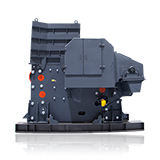Sand Washing Tech for Philippine Aggregates
In the Philippines, the construction and mining industries are rapidly evolving, with increasing demand for high-quality aggregates. One crucial aspect of producing quality aggregates is the washing process, which plays a vital role in removing impurities and ensuring that the final products meet industry standards. As a key equipment supplier, ZENITH provides tailored washing solutions that address the unique challenges of Philippine projects—including high clay content, strict environmental regulations, and space constraints.

1. Importance of Washing in Aggregate Production
In aggregate production, the quality of sand is fundamental to the performance of construction materials. Clean sand, free from impurities such as clay, silt, and other contaminants, ensures the durability and strength of concrete and other aggregates. The following points underscore the importance of sand washing in the aggregate production process:
1.1 Removal of Impuritie
Washing is essential for removing dirt, clay, silt, and other impurities from the raw materials. These contaminants can adversely affect the quality of concrete and asphalt, leading to reduced strength and durability.
1.2 Enhanced Product Quality
Clean aggregates contribute to the overall quality of construction materials. Washing ensures that the aggregates meet the specifications required for various applications, enhancing their performance in construction projects.
1.3 Environmental Compliance
Proper washing processes help comply with environmental regulations by preventing sediment runoff and minimizing the impact on surrounding ecosystems. This is particularly important in regions with strict environmental protection laws.
2. Types of Sand Washing Machines in Philippine
Several types of sand washing machines are commonly used in the Philippines:
2.1 Wheel Sand Washers
Wheel washers are commonly used for washing sand due to their straightforward operation and efficiency. The system consists of a rotating wheel equipped with tubs that wash aggregates. Key advantages include:
- Versatility: Effective for both fine and coarse aggregates.
- Simplicity: Easy to maintain and operate, making them suitable for smaller operations.
- Water Efficiency: Typically uses less water than other systems.
- Challenges: Wheel washers may struggle with excessive clay content and might not achieve the same level of cleanliness as other advanced technologies.
2.2 Screw Sand Washers
Screw washers function by employing a helical screw that moves the material through a pool of water. This technology is suitable for both sand and gravel, effectively removing surface impurities.
- High Efficiency: They can effectively remove clays and silts, offering better material cleanliness.
- Consistent Product Quality: The controlled environment allows for consistent washing results.
- Challenges: The equipment can require significant maintenance, particularly on wear parts, and may be less efficient in high clay situations.

3. The Sand Washing Process
3.1 Feed Preparation
Before washing, the raw materials are typically crushed and screened to the desired size. This preparation ensures that the washing process is efficient and effective.
3.2 Washing Operation
The washing process involves the following steps:
- Material Feeding: The crushed material is fed into the washing machine, where water is added to facilitate the removal of impurities.
- Washing Action: The machine's mechanical action, combined with water flow, separates the contaminants from the sand or aggregates.
- Draining and Screening: After washing, the clean material is drained and screened to ensure the desired size and quality.

3.3 Quality Control
Regular testing and monitoring of the washed aggregates are essential to ensure they meet the required specifications for strength, gradation, and cleanliness.
The washing process in stone crushing production lines is crucial for producing high-quality aggregates in the Philippines. By utilizing advanced sand washing equipment, operators can effectively remove impurities, enhance product quality, and comply with environmental regulations. As the demand for quality construction materials continues to grow, investing in efficient washing processes will be vital for success in the industry.







